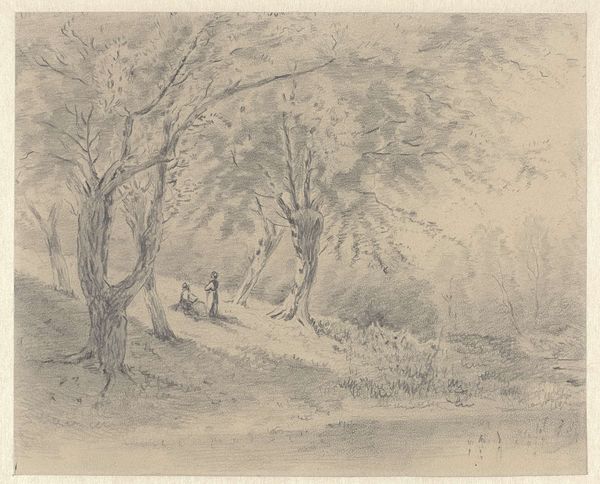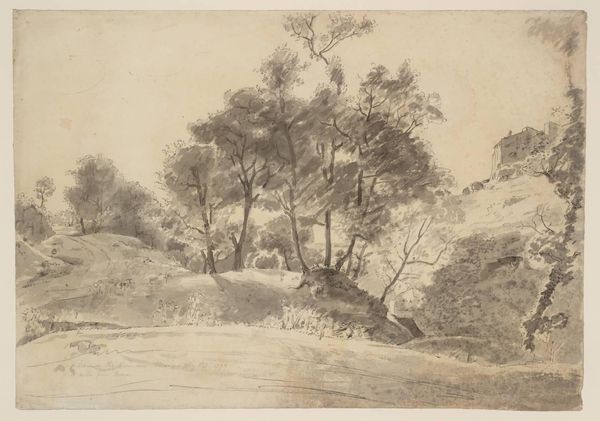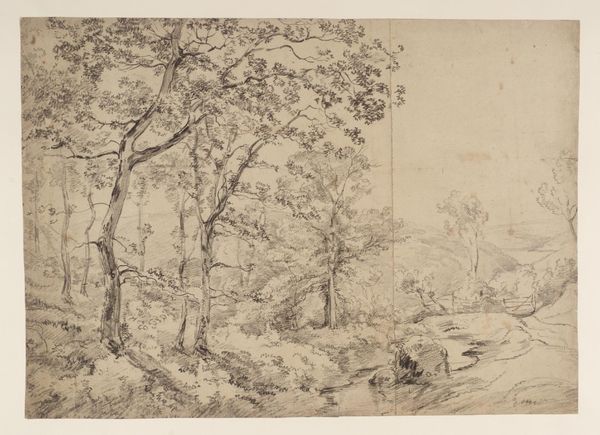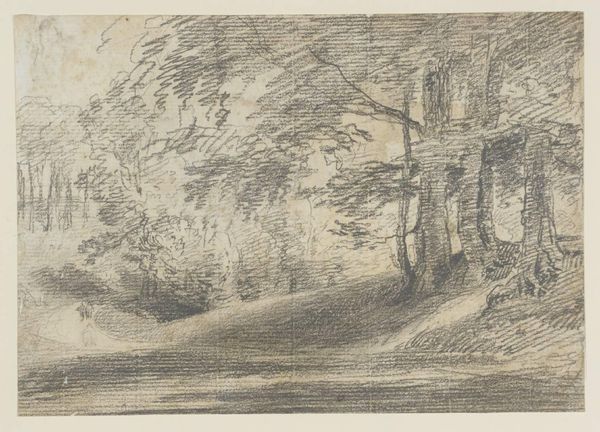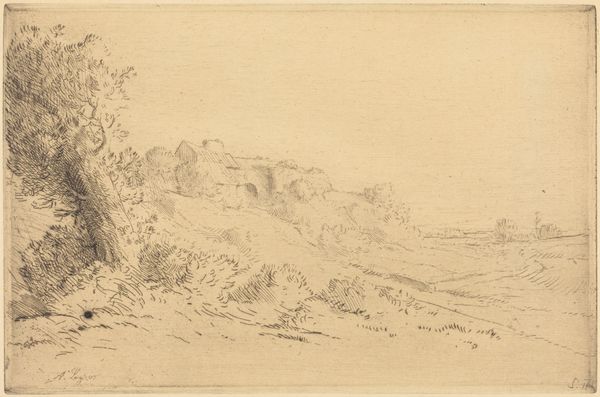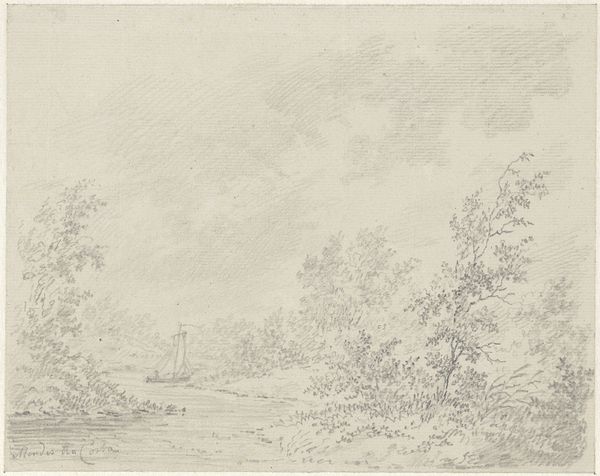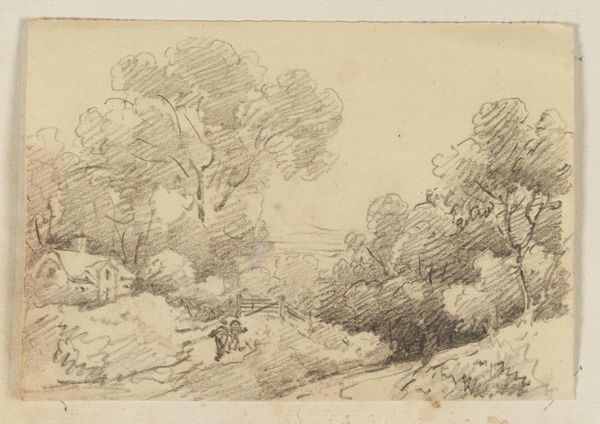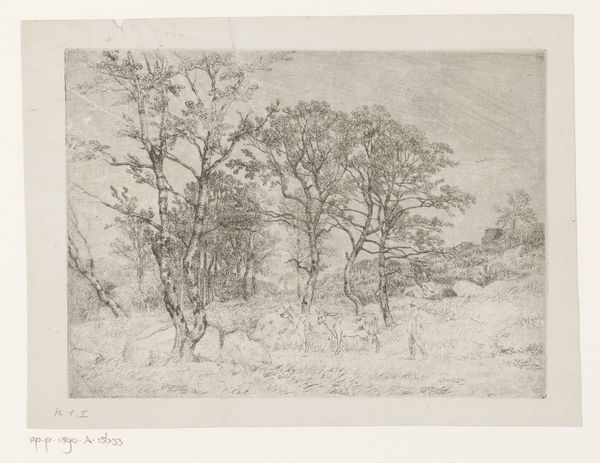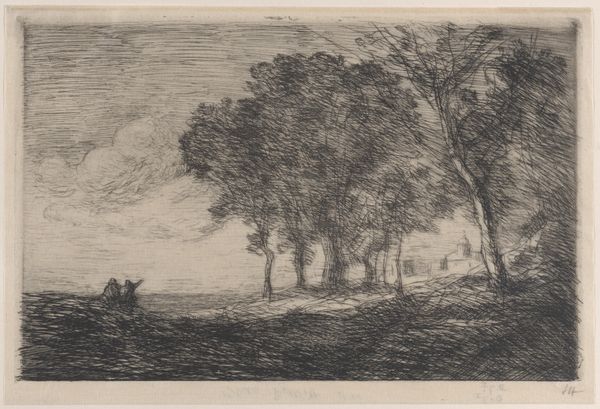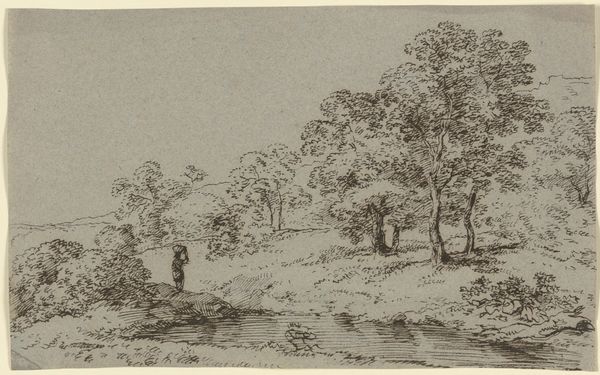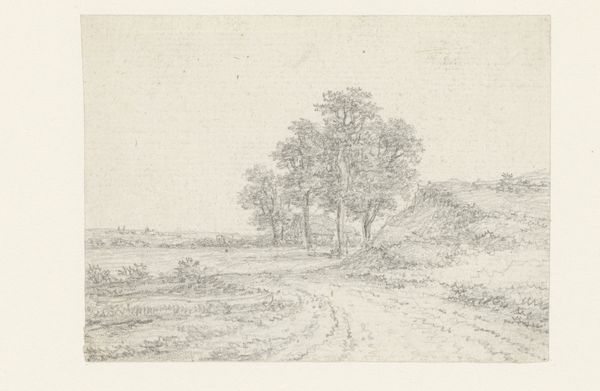
drawing, pencil
#
pencil drawn
#
drawing
#
pencil sketch
#
landscape
#
pencil drawing
#
pencil
#
realism
Dimensions: height 276 mm, width 483 mm
Copyright: Rijks Museum: Open Domain
Editor: So, here we have "Landscape on Jersey" attributed to Pierre Louis Dubourcq, possibly from 1849. It's a pencil drawing and gives a sense of quiet, rural life. What do you make of it? Curator: It's fascinating how seemingly simple sketches like this offer insights into the social context of art production and consumption. How do you think the public perceived landscape art in the mid-19th century, especially in contrast to history painting, which was more celebrated at the time? Editor: I imagine landscape art was seen as more accessible, perhaps? Less about grand narratives and more about personal connection to nature. Curator: Exactly. Landscape art gained popularity alongside burgeoning middle classes and urbanization. People felt a yearning for rural life, so picturesque landscapes became a form of cultural capital. Was Dubourcq part of an established art institution, and how might that have influenced his style and subject matter? Editor: I am not aware if Dubourcq was formally recognized, and in that sense, it's tempting to think his detailed pencil drawing mirrors the burgeoning Realist movement and perhaps suggests that he wanted to capture a truly authentic glimpse into this Jersey location, for which photography was in its early stages, as if competing with it.. Curator: Precisely, the emergence of Realism challenged the academic hierarchies, positioning everyday life as worthy of artistic attention. I wonder about the presence of a figure in the landscape too. What might that imply about the artist’s views of humanity's relationship with nature during that period? Editor: The figure makes it relatable, less sublime and more domestic and quaint perhaps? Curator: Yes. We are seeing society through landscape here. It shows us how even quiet images played a role in constructing ideas about place, identity, and social values in 19th-century Europe. Editor: I see this artwork with fresh eyes, and all these layers that I could have missed otherwise. Curator: It’s rewarding how art can unveil not only the aesthetic of a period but also its values.
Comments
No comments
Be the first to comment and join the conversation on the ultimate creative platform.
